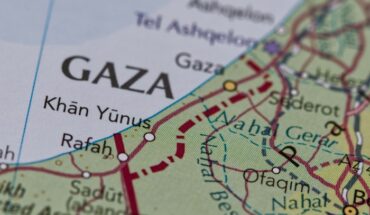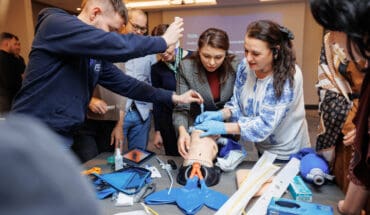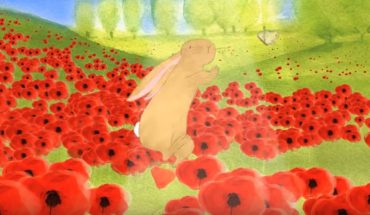Professor Sir Simon Wessely is President, Royal Society of Medicine and former President of the Royal College of Psychiatrists. As well as leading the Mental Health Act review, he is Civilian Consultant Advisor in Psychiatry to the British Army and a trustee of the charity, Combat Stress. He will be presenting the key note speech at the upcoming seminar, War, terror and the brain, to be held in London at the RSM on Monday 13th May 2019.
There are lots of myths and misunderstandings about issues like Post Traumatic Stress Disorder. For one thing, there is a current trend to trying to trace PTSD back through history all the way to ancient times. Scholars cite texts from the Iliad and Gilgamesh, both epic poems written in archaic languages millennia ago. The argument goes that as long as people have been horrible to each other, there has been PTSD. People experiencing PTSD have symptoms such as flashback or panic attacks after exposure to extremely stressful or traumatising events; hard wired in the brain as many people hold.
But this is an error, in my opinion. In the first instance, ancient texts are difficult to interpret, even if you are a linguistics expert. Concepts in classical texts are very difficult to translate and textural analysis is highly contested and epic poems aren’t medical notes.
PTSD, as we understand it, dates from 1980 when it first entered the diagnostic canon, and even since then, it has already changed its definition four times. This is because our response to trauma is not just about neurons firing in the brain, but also the complexity of emotional reactions, background, culture and expectations. PTSD, as we understand it, dates from 1980 when it first entered the diagnostic canon, and even since then, it has already changed its definition four times. This is because our response to trauma is not just about neurons firing in the brain, but also the complexity of emotional reactions, background, culture and expectations.
If our understanding and definition has already changed four times in four decades, it seems a bit far fetched to claim that it was immutable for the preceding 4000 years.
To give you an example. We can all agree that seeing someone burnt to death is a major traumatic event, and is a category one trauma in PTSD. But not so long ago, at least using the Homeric poet as a time scale, watching someone being burnt to death at the stake was public entertainment in London. I take my children to Chelsea to see football these days, but dads in the 16th century took their kids to watch someone be hanged, drawn and quartered – look at the Crown in some contemporary drawings. We might infer that they weren’t traumatised by this horrible site sight because it was part of their culture and everyday life.
It’s also wrong to say that PTSD used to be known as shell shock. During wars in Iraq and Afghanistan, I am aware of three cases of what looked like classic shell shock in our Forces, compared to tens of thousands of cases in the First World War. Myself and historian, Edgar Jones, have argued that shell shock is not the same as PTSD but a different condition which had its time and place and is largely absent today in military personnel.
It’s also wrong to say that PTSD used to be known as shell shock. During wars in Iraq and Afghanistan, I am aware of three cases of what looked like classic shell shock in our Forces, compared to tens of thousands of cases in the First World War. Myself and historian, Edgar Jones, have argued that shell shock is not the same as PTSD but a different condition which had its time and place and is largely absent today in military personnel.
Shell shock was marked by gross neurological disorders such as deafness, muteness, paralysis and limb twitching but hardly anywhere in the literature can we find any reference to flash backs – one of the key hallmarks of PTSD. Depression, crying, impotence are all in the medical records of the time around the First World War, but not flashbacks. Why didn’t they mention this? One theory is that this was before the time of mass cinema when the flashback became a powerful cinematic tool. I wonder if men who started going to the pictures regularly somehow altered the way they processed trauma – art imitating life and life imitating art.
However PTSD evolved, it is a condition that affects between 2-5% of British military personnel – still a large number but nowhere near as high as people think. This is because soldiers, sailors and airmen and women are part of a cohesive group, a small band of people who trust each other with their lives and this gives them support. Interestingly, reservists are twice as likely to suffer from PTSD and suffer from it for longer periods as regulars, a phenomenon we still don’t fully understand but the evidence points to this being more about differences in experience and support on returning home.
What causes soldiers to break down is not just experiencing bad things, but when these happened in situations which weren’t meant to happen, like being exposed to friendly fire. In this situation, other emotions like anger can take over and are associated with much higher rates of psychiatric disorders.
What causes soldiers to break down is not just experiencing bad things, but when these happened in situations which weren’t meant to happen, like being exposed to friendly fire. In this situation, other emotions like anger can take over and are associated with much higher rates of psychiatric disorders.
That’s when your own side lets you down. Conversely, also associated with much higher rates of disorders, is when you feel you have let your own side down – done or not done something which leads to guilt and shame.
But these concepts don’t work so well when dealing with civilians who are caught up in terrorist attacks. They are much more susceptible to PTSD, and rates are closer to 20 per cent.
The reason that military personnel are protected is because they volunteer to join the service and have reasonable preparedness for what can happen. Civilians on their way to work neither volunteered, nor received training and never expected to be exposed to random acts of senseless violence about which they are powerless to do anything. It also matters if you belong to the majority group compared to minority communities. We know that people from Muslim backgrounds had higher rates of anxiety after the bomb attacks in London possibly due to worries about a backlash or simply reflecting their status in society. Social exclusion, poverty, discrimination, and so on all increase the risk of developing any psychiatric disorder after trauma.
Treatment for PTSD is evolving but we do know that there is no evidence that immediate intervention by mental health professionals, known as single session psychological debriefing, is any help – indeed it can make things worse. Instead, we are moving towards providing practical help to survivors that can make them more comfortable and less anxious. So, for example, immediately after the Grenfell fire, survivors and traumatised friends and neighbours were offered working phones or phone chargers so they could make personal calls. Very few chose to call a counsellor. Just as in the Blitz in London, we are finding that survivors of trauma first need shelter, safety, information and a cup of hot tea. They don’t want to relive their nightmare experience. In a few weeks time, if they are still struggling to cope, that is when the professionals can step in to offer substantial help and support when it is needed.
- Professor Sir Simon Wessely on war, terror and the brain - 30th April 2019
- Reforming our Mental Health Act - 12th June 2017
- The war is over… now the battle against combat stress begins - 10th March 2016







